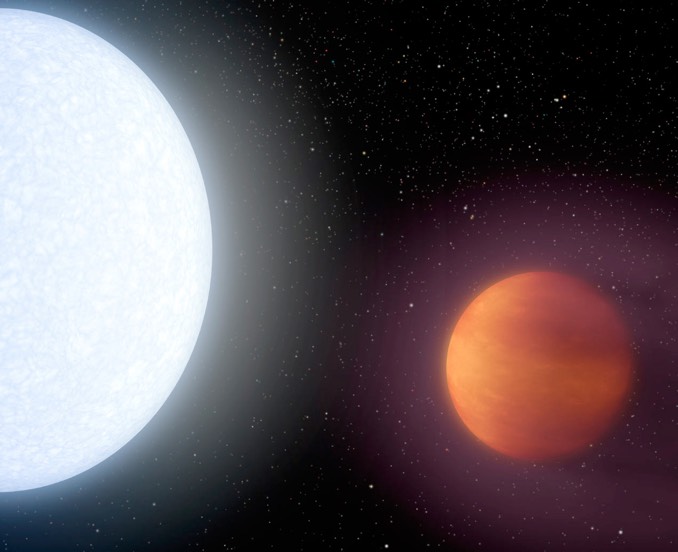
KELT-9b is exoplanet 650 light years from Earth, orbiting its host star at a distance of just 6 million kilometres or so (3 million miles) and completing one trip around its sun in just 1.5 days. Atmospheric temperatures soar to more than 4,000 degrees C (7,200 degrees F), making it the hottest exoplanet yet discovered.
At those temperatures, elements are almost completely vaporised. The atmosphere is cloudless and free of aerosols, giving the planet a clear sky that is flooded by light from the star.
A team of scientists with the Universities of Bern and Geneva used the HARPS-North spectrograph on the Italian National Telescope at La Palma to study the spectra of elements in KELT-9b’s atmosphere, finding iron and titanium atoms. Follow-up observations confirmed the initial detections and found signs of vaporised sodium, magnesium, chromium and the rare-Earth metals scandium and yttrium.
“Our team predicted that the spectrum of this planet could well be a treasure trove where a multitude of species can be detected that have not been observed in the atmosphere of any other planet before,” said Jens Hoeijmakers, lead author of the study published in the journal Astronomy & Astrophysics.
“With further observations, many more elements may well be discovered by using the same technique in the atmosphere of this planet in the future, and perhaps also on other planets that are heated to similarly high temperatures.”
Kevin Heng, director of the Center for Space and Habitability at the University of Bern, said the spectrographic techniques used to identify constituents in KELT-9b’s atmosphere may one day lead to even more profound results.
“The chances are good that one day we will find so-called biosignatures, i.e. signs of life, on an exoplanet, using the same techniques that we are applying today,” he said. “Ultimately, we want to use our research to fathom the origin and development of the solar system as well as the origin of life.”



